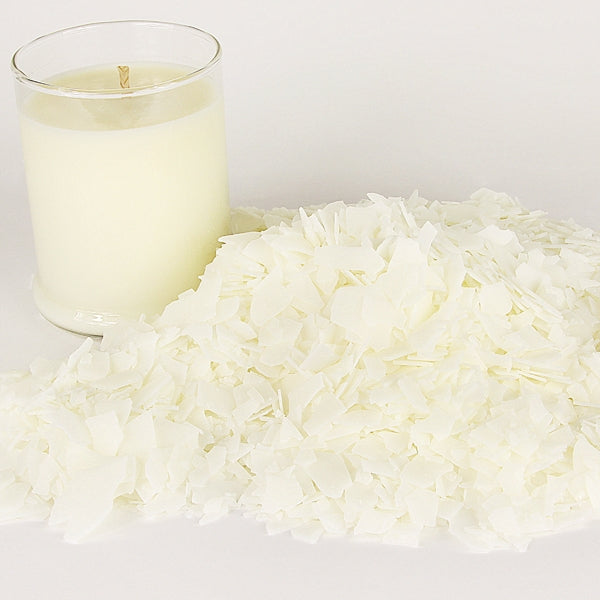Improve Your Living Area with Elegant Soy Candles and Home Fragrance
Improve Your Living Area with Elegant Soy Candles and Home Fragrance
Blog Article
From Wick to Wax: Comprehending the Chemistry Behind Soy Wax Candles and Their Ecological Effect
As we brighten our areas with the warm glow of candle lights, there exists a world of detailed chemistry behind the relatively easy act of lighting a soy wax candle light. Join us as we decipher the scientific ins and outs behind soy wax candle lights and explore their implications on our setting.
Soy Wax Vs. Paraffin Wax
When comparing soy wax and paraffin wax for candle production, it is vital to understand the unique attributes and benefits of each product. Soy wax is an all-natural, sustainable source stemmed from soybean oil, making it naturally degradable and environment-friendly - crystal soy candles. On the other hand, paraffin wax is a by-product of petroleum refining, which increases worries concerning its ecological influence and sustainability
Soy wax candles shed cleaner and release less soot contrasted to paraffin wax candle lights, making them a much healthier selection for interior air high quality. In addition, soy wax has a reduced melting point, enabling a longer-lasting candle that spreads fragrance better. Paraffin wax, on the other hand, tends to burn faster and much less cleanly, possibly launching damaging chemicals right into the air.
From a sustainability point of view, soy wax is preferred for its biodegradability and sustainable sourcing, straightening with the expanding consumer preference for environmentally conscious products. While paraffin wax has been a standard selection in candle making as a result of its affordability and convenience of use, the shift in the direction of eco-friendly options like soy wax is acquiring energy in the market.
Chemical Make-up of Soy Wax

Combustion Refine in Soy Candles
The chemical composition of soy wax straight influences the burning procedure in soy candle lights, impacting aspects such as melt time, scent release, and ecological effect. When a soy candle light is lit, the warm from the flame melts the wax near the wick. This liquid wax is after that prepared the wick as a result of capillary action. As the fluid wax gets to the fire, it goes through and evaporates combustion. The burning process includes the vaporized hydrocarbons in the wax reacting with oxygen airborne to create warm, light, water vapor, and carbon dioxide.
The burning performance of soy candle lights is affected by the purity of the soy wax and the quality of the wick. Furthermore, soy wax candles have a lower ecological impact contrasted to paraffin candle lights due to their eco-friendly and biodegradable nature.

Environmental Advantages of Soy Wax

Taken into consideration a lasting alternative to conventional paraffin wax, soy wax uses notable environmental benefits that make it a preferred choice amongst eco-conscious home fragrance consumers. Soy wax burns cleaner and creates much less residue than paraffin wax, contributing to better interior air high quality and lowering the demand for cleaning and upkeep. Overall, the ecological advantages of soy wax line up with the growing need for environmentally friendly and lasting items in the market.
Recycling and Disposal Considerations
Recycling and appropriate disposal of soy wax candle lights play a crucial function in keeping ecological sustainability and decreasing waste in communities and households. When it comes to recycling soy wax candle lights, the initial action is to ensure that the candle has shed totally.

In terms of disposal, if recycling is not an option, soy wax candle lights are biodegradable and can be securely gotten rid of in a lot of home waste systems. Nonetheless, it is constantly suggested to talk to local recycling facilities or waste management solutions for certain standards on candle light disposal to make certain appropriate handling and environmental defense.
Conclusion
In conclusion, the chemistry behind soy wax candles exposes their environmental benefits over paraffin wax candle lights. Soy wax, derived from soybean oil, burns cleaner and creates less soot when compared to paraffin wax.
When contrasting soy wax and paraffin wax for candle light production, it is vital to comprehend the distinct qualities and benefits of each material (soy candles).Soy wax candles melt cleaner and send out less residue compared to paraffin wax candles, making them a much healthier option for indoor air quality.Thought about a lasting alternative to typical paraffin wax, soy wax offers notable environmental benefits that make it a prominent option amongst eco-conscious customers. Soy wax burns cleaner and produces less residue than paraffin wax, adding to far better interior air top quality and lowering the demand for cleansing and upkeep.In verdict, the chemistry behind soy wax candles reveals their ecological advantages over paraffin wax candles
Report this page